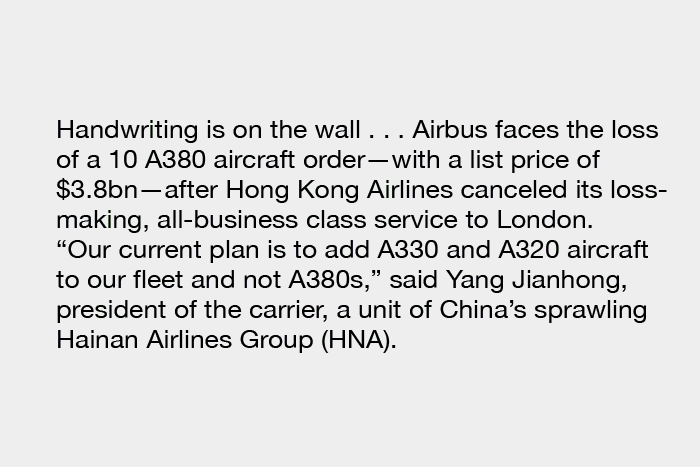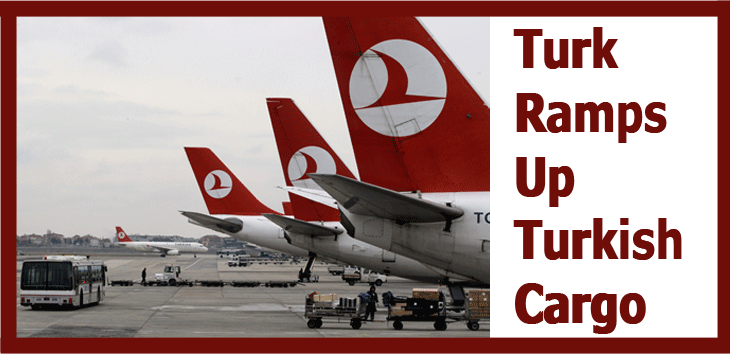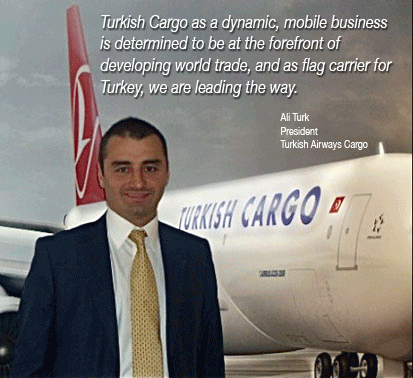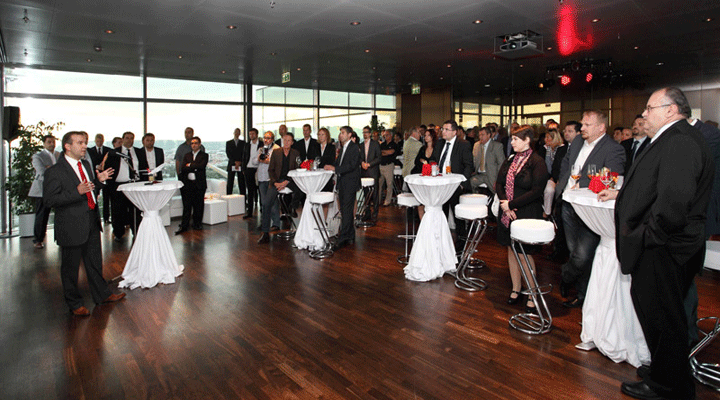 |
 |
|
| |
||
|
Vol. 11 No. 80 Tuesday August 21, 2012 |
|
|
Well,
it turns out that “Dog
Days” no longer solely
refer to that time of summer
in the northern climes when
the August heat and dwindling
daylight signal that autumn
will soon tell the swallows
it’s time to fly.
|
In
a world where “what
have you done for me lately”
is a mantra to many, high-flying
Turkish Airways Cargo has racked
up some impressive achievements
in just Summer 2012 alone.
|
|
“Seventy
percent of intercontinental
business, both for passenger
and cargo side, mainly European-Asia
Pacific, is based on Turkey’s
geographical location.
“It’s
on the traditional Silk Route.
“Turkish
Airlines leverages location
with the sixth largest global
airline network, offering shippers
the ability to reach more than
200 international destinations.
“In
a competitive and fragile international
air cargo market where business
competes for the customers,
customer satisfaction becomes
a key element of our business
strategy.
“The
primary focus of Turkish Cargo
is to achieve maximum customer
satisfaction and to deliver
a 'customer-oriented approach’
as a standard of our quality
policy.
“To
achieve this end, we have constantly
examined our quality standard,
renovating our operational procedures
to deliver a shipment process
that is both transparent all
around, and fast.
“For
example, one objective to keep
things simpler for our customers
was a renovation of our website
www.turkishcargo.com.tr to offer
the easiest way to monitor every
step of shipments aboard Turkish
Cargo.
“Moreover,
Turkish Cargo has participated
in Cargo 2000 to increase its
performance operationally and
to meet customer expectations
for higher service quality.
Thus, we target the sustainable
growth with an ever-widening
flight network and cargo capacity
by increasing our share in global
air cargo market.
“We
re-engineered transportation
processes from the shipper to
consignee, considering the agreed
applicable standards on the
assistance of our IT department.
“When
we look in general, we provide
a service quality above the
sector level to our customers.
But we have a primary vision
to maintain sustainable quality
and operational excellence in
our services.
“In
order to achieve this, Turkish
Cargo make continuous investments
in IT and in infrastructures.
“Recently
we launched an operational optimization
process while rejuvenating all
the existing systems in our
warehouse in IST, and also adapting
our internal IT system to latest
business processes.
“We
are aware that IT and infrastructure
are significant issues, and
we are in a tender process to
fully change our IT structure,
which we expect will be in full
operation by 2014.”
“Turkish
Cargo offers the safest and
fastest sender-to-recipient
transport service for a wide
variety of product lines: from
textile to plastics; machines
to aircraft parts; consolidated
cargos to electronic materials;
perishables to dangerous goods;
live animals to valuable cargos.
“Turkish
is especially experienced with
dangerous goods, having huge
loads on these commodities every
year.”
In
terms of the challenges air
cargo faces, Mr. Turk has an
interesting take not seen or
heard from by many in the business
today: the air cargo family
might just be too small.
“The
airline business has an oligopolistic
market character.
“Added
to that situation are restrictions
from some countries that suppress
growth.
“Building
a successful cargo business
is also challenged by the amount
of investments that must be
made to enter new markets, and
the small profit margins versus
the time and money spent.”
Ali
Turk is no newcomer to the air
cargo business. He has worked
in the logistics sector for
14 years; before Turkish Cargo,
he held many different positions
related to logistics, in warehouse
management and supply chain.
“I
think air cargo is still quite
open to development,”
he insists.
“Turkish
Cargo as a dynamic, mobile business
is determined to be at the forefront
of developing world trade, and
as flag carrier for Turkey,
we are leading the way.
“Aside
from all the rest, this business
fits well with my personal character,”
Mr. Turk smiled.
Geoffrey/Flossie
Whenever
an article appears in the trade
press about the 'sea-air' concept,
the people and companies interviewed
are (let's be polite) not the
front-runners in the field.
|
Get
On Board Air Cargo News
FlyingTypers |
If
You Missed Any Of The Previous
3 Issues Of FlyingTypers |
|||||
|
|||||
FT080912 |
FT081512 |
||||
|---|---|---|---|---|---|





 And
as mentioned at the top, the
beat goes on.
And
as mentioned at the top, the
beat goes on.



